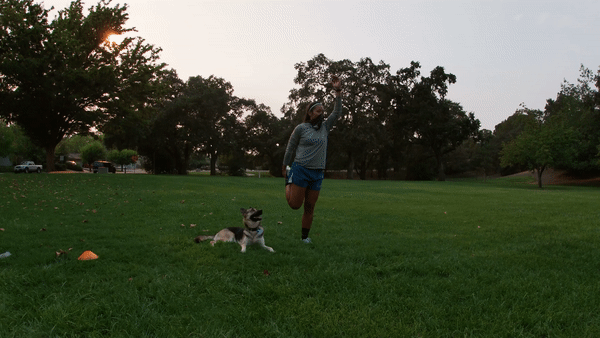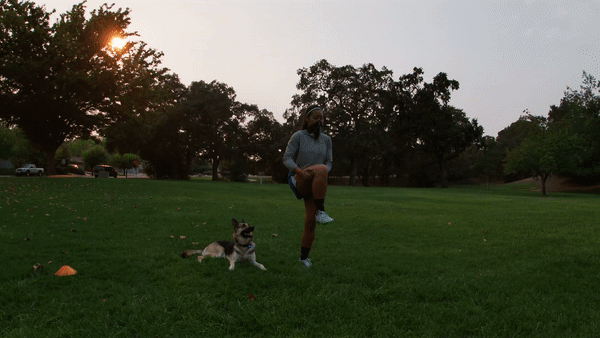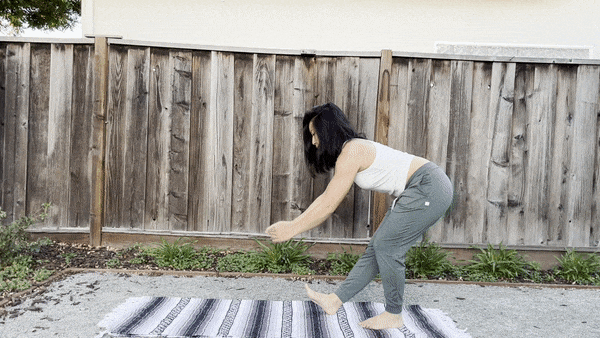How I Kept Up With My Cross Country Friend On, Arguably, The Most Difficult Ragnar Relay
- Judith Wang
- Jun 21, 2022
- 5 min read
Even though I normally despise running, training for this relay was the pinnacle of my fitness during a personal "quarter life crisis". The good news: you can probably do it too.

If there's a half or full marathon coming up and you've been putting off training for some time, it might not be too late. Though I don't recommend attempting something too strenuous without adequate preparation (as an injury-prone human with injury-prone friends), there are some key fundamentals that most people can utilize on top of a smart approach to distance running.
The Ragnar (Trail) Relay wove through the terrain of Los Coyotes hills and consisted of three separate legs (3.1mi, 3.1mi, 7.9mi) each teammate had to finish. The sequence may vary depending on the order of teammates and the intensity of each leg varies with incline and distance. Each teammate starts and finishes at a designated point where a tracker is swapped to the next runner's body--a slightly comforting notion that your team knows where you are.
About three months prior to this race, I could barely finish a 5K (3.1 miles). Eight miles sounded impossible. And 8 miles that included switchbacks uphill, and at elevation? Count me out. But my friends insisted it was possible and there is something innately satisfying in rewiring my brain to say "seems doable" to a statement that once began "I can't". Initially, I could not manage a proper pace without burning out quickly and I couldn't seem to schedule a sensible schedule to follow...until I did! My three key components include: working on hip and mid back mobility, taking time to follow through core exercises, and being patient enough to keep strides short and my feet quicker and lighter when building endurance. Two days of camping and running in San Diego later, I finished the race with my ankles unharmed (if you have chronic ankle sprains, you know the struggle!) and some amazing people to share champagne beside me. If you're signed up for a race this year, the journey will be well worth it!
A little note: Though the trail itself is not necessarily the most accessible, Ragnar Relays also
happen on road races that can be suited to most bodies. For these reasons, the tips below may not be for Spartan Races or other events which may require more adaptive approaches for different body types.

1. Have A Warm Up Routine After getting to know a number of runners, I've learned quickly that not everyone enjoys a warm up routine. That's putting it lightly. But if you're starting a regimen, warming up even with just a few moves before hopping into a run can make a world of difference in how your foot strikes the floor, how the legs swing through, how stable your hips are (say "quit it!" to that knee pain), and how the mid back rotates! ALL of this plays a part in not only gliding on your runs but in being able to prevent injury.
Want a routine you can get done within minutes before a run? Check out this quick post that takes you through a few key movements and practices in under 10 minutes.
2. Get More Bang For Your Buck
The first thing to dial in is the core. Everyone says that but there's also a way to retrain the core to improve running mechanics, more efficiently transfer energy (i.e., use less energy with each step and get tired later in the run), and mitigate injury.
As a coach, I hesitate to give quick bulletproof tips because everyone's body is different and it's one thing to think we are doing an exercise properly and another thing to perform these movements with the intention of turning on specific muscle groups. Keeping this in mind, here are three of my favorites that work for my running: bear crawl variations, side step practices, and eccentric strengthening (eccentric RDLs, Nordic hamstring curls, single leg squat variations, drop freezes...).

Bear Crawls This movement starts in a quadruped (hands and knees on the ground). Start with your hands under the shoulders and knees under the hips. With the core engaged to keep the back flat/neutral, lift the knees off the ground into a hovering position. Try holding for 30 seconds and rest for 15 seconds. Repeat 3-4 times. As you improve in strength and stability, try bear crawls or even add hip extensions. Don't know how to progress? Send us a message!

Side Steps Side stepping can work a variety of goals. For running, I enjoy using them to work on my glute medius. Think about shorter steps out and leading from the knee more than the foot. When bringing the feet "together", try to maintain some space between the feet and knees (try feet under the hips) to work on stability!

Single Leg Drop Freeze
Start with hands overhead and ribs stacked over the hips (stand like a tall pillar). Come onto the toes or initiate the movement with a small hop. Then land quickly on the same leg in an athletic stance with the hips squared, down and back. Try three sets of five reps on each side.
*If the movement is too difficult, try performing it bilaterally (on both legs) and work on a quick, soft landing. Try 3 sets of six to get started.
3. Three Ways Of Training Greater Endurance: Fartlek, Strength, and Shorter Steps
Avid runner or beginner, one of the best ways to be able to tackle longer runs starts with building the endurance--my favorite and possibly most effective: fartlek training.
Funny as the name may sound, the utilization of intervals challenges the heart to pump hard (deliver oxygen to organs, clear byproducts in the blood, cool the body down, etc.) for set intervals then allows time to slow down and recover. In recovering and starting back up again, think about stopping the momentum of a bowling ball then having to get it rolling again--it takes tremendous energy! This is not a terrible thing when it comes to training, but it is important to consider when deciding which days to utilize intervals.
Most training plans include interval training like this once or twice per week. Similar to HIIT (high intensity interval training), overusing this method of training will put undue stress on the body. To mitigate overtraining, I would taper the day after with a strength day followed by a light jog to encourage blood flow.

One Fartlek day, then a strength and short jog day, followed by a tempo run (I use the entire Future Nostalgia album by Dua Lipa to keep pace), and lastly an endurance run. In between each run intensive day, I sprinkle in workouts that are prevalent to improving mobility, core stability, and running mechanics.

4. Honorable Mention: Recovery
Recovery is one of the most underrated tools in training. Giving the body a break is essential in allowing the tissues to repair--the repair is what gets you those #gainz. Prioritize sleep when you are able and yoga or some less damaging form of movement when your body calls for it. If you are an athlete with a lot of drive, take the rest day as an opportunity to get more in tune with how your body is adapting (or not) to training--if you are accustomed to pushing hard (i.e., the "all gas, no breaks" mentality) this is time to breathe and assess. The discomfort during training is ok if you're pushing past fatigue or testing the limits safely, but make sure to appropriately address any pain you feel .
All of the components of training mentioned here could be broken down into their own blog posts, so take this only as a skeleton to some bare bones training especially if you're feeling like you need a little confidence boost.
Have questions or want more? Sign up to be up to date with our new content for free!
Comment below or shout us out. We want to know what you think!

Written by:
Judith Wang
Founder, Project Green Beard
UCSC Banana Slug









Comments